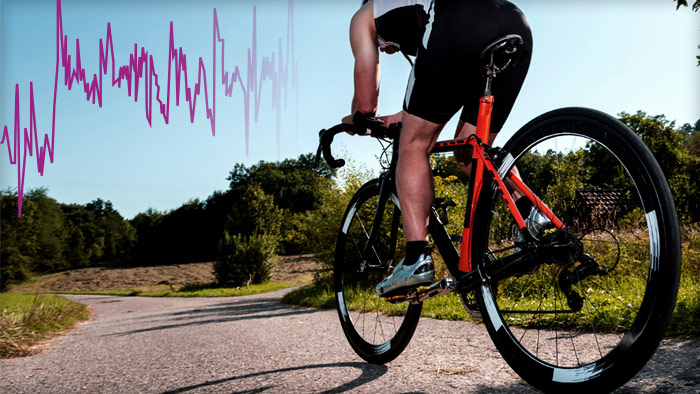In many ways, music possesses the power to enhance physical activity. You can experience numerous benefits to your health, mood, and performance by listening to music before, during, or after your workout. While you’re exploring rhythmic routes to cycling, we’ll talk about how music can be useful during your cycling trips or exercise at home.
Benefits of Music for Cycling Training
Spin classes with blaring music or riding the home trainer with favorite tunes can greatly enhance workouts. Music not only increases motivation and energy levels but also improves performance. Dr. Costas Karageorghis from Brunel University London, a renowned expert in this field, has dedicated over 20 years to studying the psychological and physical effects of music on sports and exercise. His research focuses on the relationship between music and indoor cycling performance.
Dr. Karageorghis highlights two primary applications of music in cycling to optimize performance. First, synchronous music involves consciously synchronizing the pedal rate with the rhythm. Second, asynchronous music plays in the background, creating a more pleasurable environment without requiring a conscious effort to synchronize the pedal rate with the music.
If you’ve ever taken a spin class or listened to music while using your home trainer, chances are you’ve used music in the background to create an inspiring atmosphere. While this has its advantages, the research indicates that pedaling in sync with the music is more effective in improving cycling performance.
According to Dr. Karageorghis, using synchronous music enhances efficiency in an experimentally proven way. Less oxygen is needed to perform the same amount of work, resulting in an efficiency gain of approximately 6-7%. This gain should not be overlooked.
Moreover, the synchronous application of music generally has an ergogenic effect, enhancing work performance. This effect is usually in the range of 10-15% among recreationally active individuals.
Where to Find Curating Soundtracks for Every Cycling Mood?
To find an excellent collection of cycling music, you have various options to explore. Consider the following platforms:
YouTube: You can find a wide variety of cycling playlists on YouTube. Simply search for “Cycling music” and discover the available options. Explore different playlists and find the music that resonates with you. However, keep in mind that there might be occasional commercial breaks in the videos.
Fitness apps and cycling-friendly music solutions: There are several apps designed for cycling workouts, both with or without the guidance of a trainer. Some free apps allow you to connect your own music playlist to the workout. For a more guided experience, paid apps take care of the music selection, ensuring seamless integration with your workout routines.
Spotify: Spotify offers an extensive selection of indoor cycling songs. Many instructors curate their own playlists on Spotify, providing a diverse range of energetic tracks. Spotify and cycling playlists are a single whole, only advertising can interfere with you. If you want, you can block Spotify ads without purchasing premium. To stop Spotify ads, you can use VeePN’s advanced VPN with Adguard feature. This way you will block ads not only in Spotify but also in the browser and other applications.
What to Look for When Choosing the Ideal Music for Cycling?

Your exercise outcomes can be influenced by the type and quality of music you listen to. Consider the following factors when selecting music for your workout:
- Music preference: Your personal taste in music is crucial. Choosing music that you enjoy will enhance your satisfaction and adherence to exercise.
- Music tempo: The speed of the music can impact your exercise intensity. Generally, faster music (above 120 beats per minute) suits high-intensity activities like running, cycling, or aerobics. Slower music (below 100 beats per minute) is more suitable for low-intensity exercises such as stretching, yoga, or meditation.
- Music lyrics: The words and messages in music can impact your motivation and attitude. Opt for music with positive, uplifting, or empowering lyrics, as it will inspire you to overcome challenges and achieve your goals. Avoid music with negative, depressing, or offensive lyrics, as it can lower your self-esteem.
- Music genre: The style or category of music can affect your mood and preference. Choose music that matches the type and purpose of your exercise. For example, rock or pop music may be more suitable for strength training or power exercises.
Conclusion
Music does incredible things – it inspires us, affects us directly on the soul, and motivates us to achieve results. In sports, including cycling, the duration, quality, and pleasure of training can depend on a properly selected playlist. It’s time to admit that too much depends on our mood.








